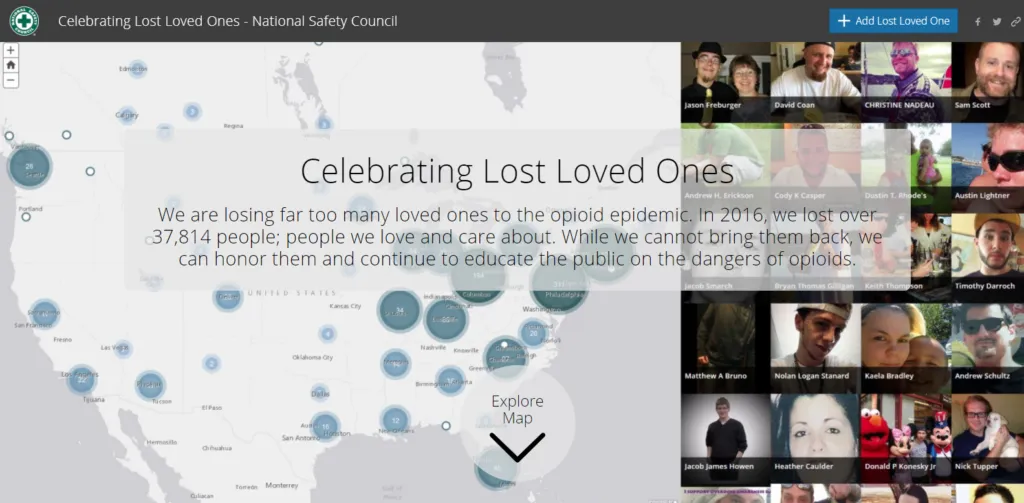
Lost a loved one to opioids? This map is for you
10 years ago, Jeremiah Lindemann, a solution engineer at Esri, lost his little brother to an opioid called OxyContin. For the first few years, he spoke very little of the topic, even with family and friends. Instead, he started volunteering at a rehab for opioid addicts. But he never felt like he was making any difference. So, he stopped.
Then, a couple of years ago, Jeremiah came across a study published by the Centers for Disease Control and Prevention. He discovered that more than 28,000 American citizens had died from overuse of prescription drugs in 2014 alone. He realized opioids was a much bigger crisis than he’d thought – one that needed to be talked about.
This time, he did what he does the best. He created an interactive memorial map to honor the victims of the opioid epidemic. The crowdsourcing platform would allow people to add an image of their late loved one and describe how they lost them to heroin and other prescription drugs.

Called Celebrating Lost Loved Ones, the map went online in 2016. Today, it hosts the memorials of more than 1,300 opioid victims across the United States. Entries have poured in from New York, Pennsylvania, Ohio, Massachusetts, Michigan, New Jersey, Wisconsin, Florida, California, Illinois, Indiana, Maryland, Minnesota, and Virginia. And given that one in every four people in the US has been directly affected by the opioid epidemic, the numbers are only increasing every day.
Which is why the National Safety Council (NSC) has now officially adopted the map as a part of its campaign to eliminate preventable opioid deaths. The NSC is positive that this map will help raise awareness of the broad impact of the opioid crisis through its human factor. According to NSC President and CEO Deborah A.P. Hersman, “The Celebrating Lost Loved Ones map can help reduce the stigma around opioid-related deaths by allowing us to get to know those in our community who were loved and are so deeply missed.”
Jeremiah echoed these feelings in a blog post he wrote while publishing the map in 2016. “This is happening to people everywhere — rich and poor, north and south, and within every demographic… If our country, our families, and our friends are to truly address this issue, we must understand what it is and where it’s happening. I’ve become much more vocal in sharing this painful story, and maps have been my voice to raise awareness about the problem.”
View the map here.







